Budapest, the Pearl of the Danube, is a city that pulses with rich history and vibrant culture, where the majestic river winds its way between grand monuments and picturesque streets. Beyond its architectural splendor and historical legacy, Budapest is also steeped in a fascinating tapestry of legends and folklore passed down through generations.
These stories, often blending historical events with elements of popular imagination, not only serve as entertainment but also offer deep insights into the values, beliefs, and fears of Hungarian society over time.
The Tongueless Lions of the Chain Bridge
Among the many architectural marvels of Budapest, the Széchenyi Chain Bridge stands as one of the city’s most iconic landmarks. Opened in 1849, it was the first permanent bridge to connect Buda and Pest across the Danube River. While its historic and symbolic significance is well known, the bridge is also wrapped in a peculiar urban legend involving the four stone lions that guard its entrances.
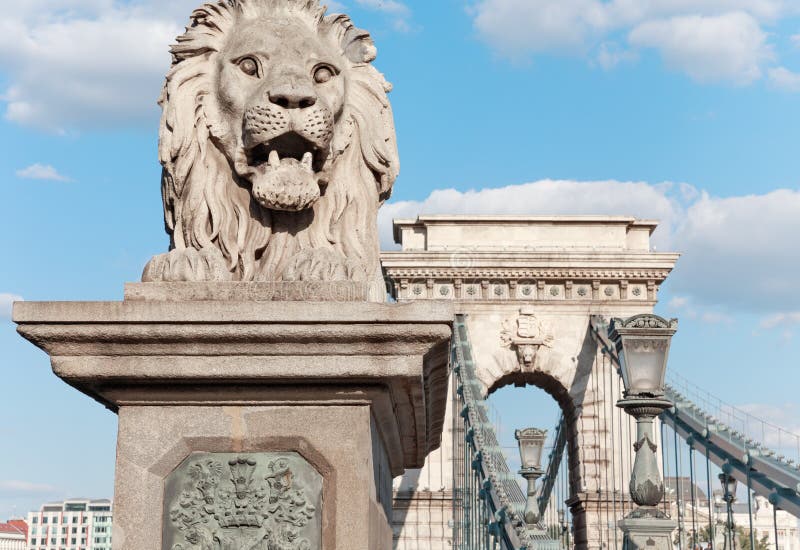
Installed in 1852 and sculpted by János Marschalkó, these imposing lion statues quickly became the subject of citywide gossip. According to local legend, a keen-eyed child once pointed out a startling omission:
“The lions have no tongues!”
Word spread, and the supposed oversight became a source of ridicule. The story takes a dramatic turn with the claim that Marschalkó, devastated by the humiliation of such a glaring mistake, threw himself into the Danube in despair.
However, the truth is far less tragic — and far more interesting. In reality, the lions do have tongues, but they are not easily visible from ground level due to the angle and design of the sculptures. As for the sculptor, Marschalkó lived on for many years after completing the lions, continuing his artistic career.
Despite being a myth, the tale of the tongueless lions has become a beloved piece of Budapest folklore, adding a touch of drama and whimsy to one of the city’s most photographed monuments. Whether believed or not, it’s a story that continues to captivate locals and tourists alike.
The Fat Policeman: A Modern Legend of Luck and Appetite
Near the magnificent St. Stephen’s Basilica, one of Budapest’s most iconic landmarks, stands a peculiar and beloved statue known as the Fat Policeman. This cheerful bronze figure has become more than just a photo opportunity — it’s a symbol of good fortune and a growing legend in the heart of the city.
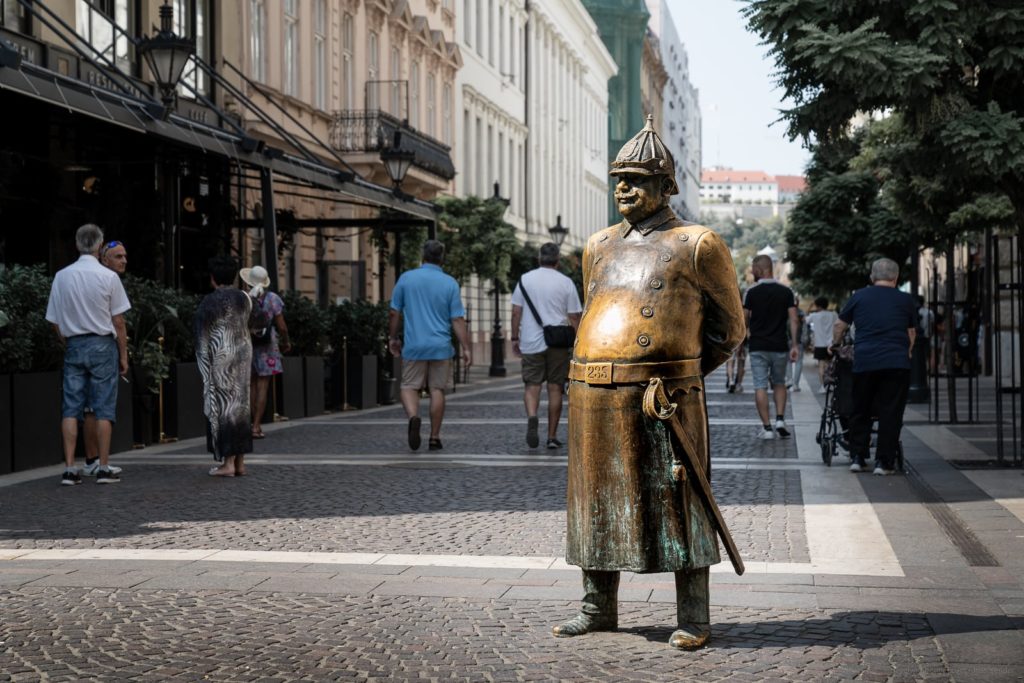
According to local folklore, rubbing the policeman’s round belly brings good luck and excellent food. This playful tradition ties in perfectly with Budapest’s reputation for rich culinary delights and vibrant street food culture. Some even say that giving the statue’s belly a gentle rub can help ward off weight gain, making it a favorite among tourists and locals alike.
The statue was created in 2008 by Hungarian sculptor Illyés András, who was inspired by the traditional police uniforms of the early 20th century and the warm personality of his own grandfather. The figure exudes charm, humor, and nostalgia, capturing a lighter, more whimsical side of Budapest’s cultural landscape.
This growing belief in the statue’s lucky powers reflects a wider global phenomenon: the tradition of touching statues for good luck, which can be found in many cultures around the world. What makes the Fat Policeman particularly interesting is how a modern sculpture has so quickly become embedded in urban legend, demonstrating how new folklore can emerge and thrive even in contemporary settings.
The Fountain of Matthias: A Legend of Tragic Love
Located in the historic Buda Castle District, the Fountain of Matthias is more than just a beautiful monument; it is the living embodiment of one of Budapest’s most poignant and enduring legends. Designed in 1904 by Alajos Stróbl and Alajos Hauszmann, the fountain honors the tragic love story between King Matthias Hunyadi and Szép Ilonka, a beautiful peasant girl.
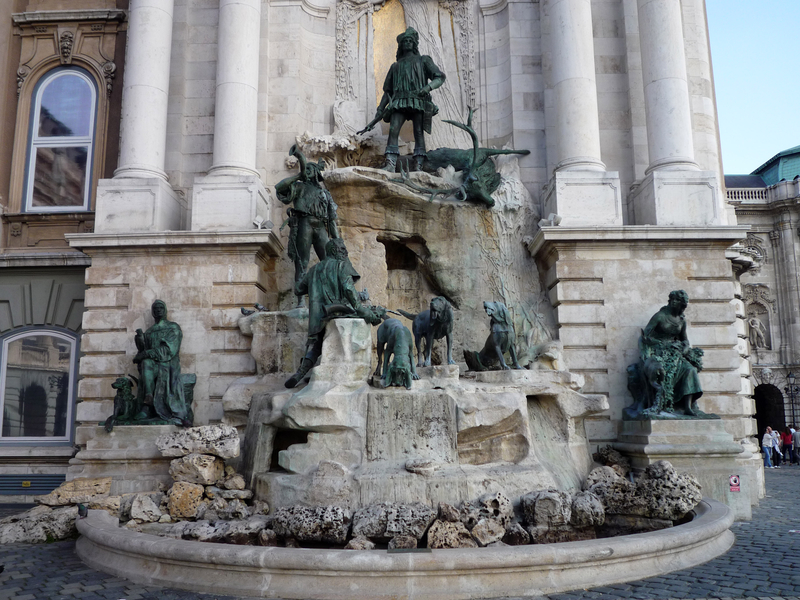
According to the legend, King Matthias, the most revered monarch of Hungary, often went hunting disguised as a commoner to learn about the true state of his kingdom. During one of these hunts, he encountered Szép Ilonka, and the two fell in love at first sight. However, when Ilonka discovered that the man she had fallen for was the king, she realized that their love could never be fully realized. Overcome by the impossible nature of their love, she died from a broken heart.
This heartbreaking tale was first recorded by the court historian Galeotto Marzio and later immortalized by poet Mihály Vörösmarty in the 19th century. The Fountain of Matthias now stands as a tribute to their love, inviting visitors to toss a coin into its waters in the hopes of returning to Budapest. The act of wishing at the fountain connects modern-day visitors with this ancient, tragic story, ensuring that the legend of Matthias and Ilonka continues to touch the hearts of all who hear it.
The Myth of the Turul Bird: A National Symbol
One of Budapest’s most significant historical legends is that of the Turul Bird, a mythical bird of prey, often depicted as a falcon. It holds an essential place in Hungarian tradition and is considered a national symbol of power, protection, and divine guidance. The legend of the Turul has been passed down through generations and continues to play a prominent role in Hungarian identity.
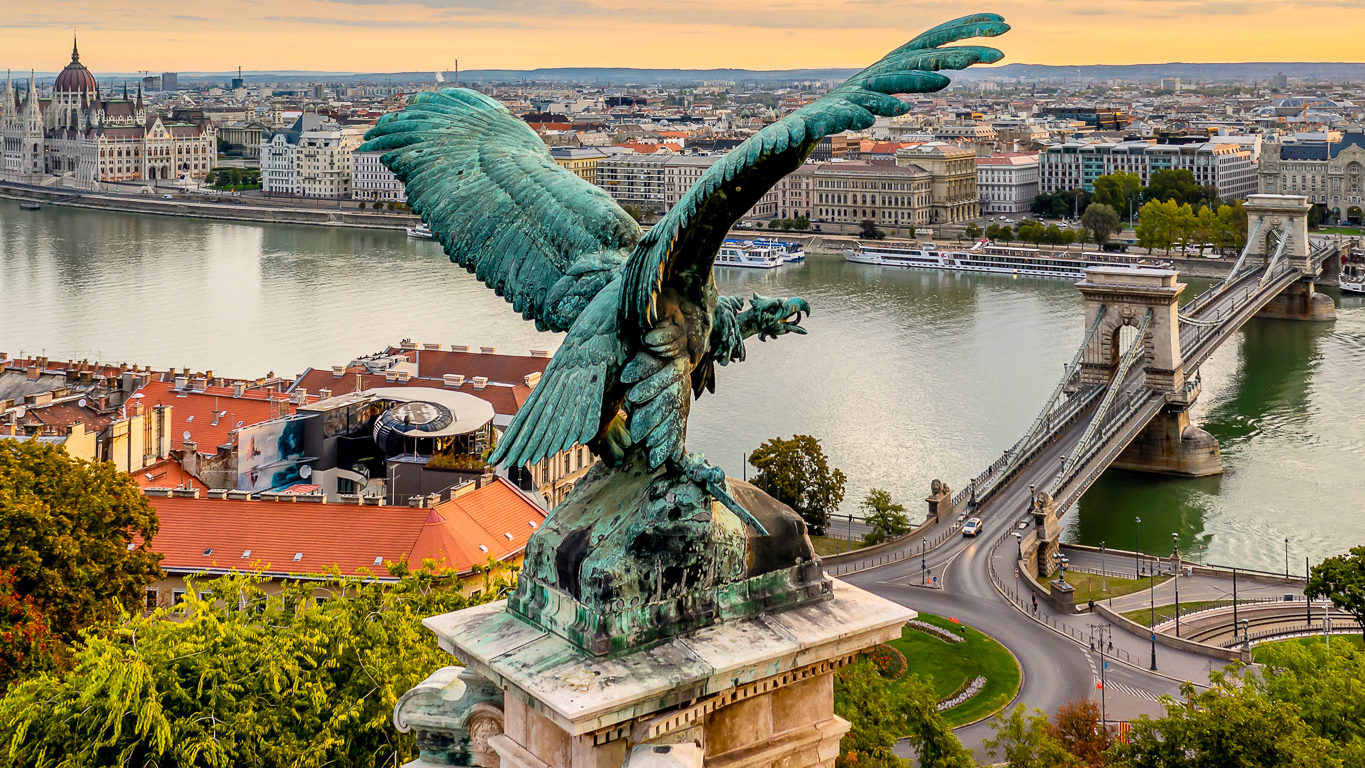
The Dream of Princess Emese
In one version of the myth, the Turul bird appeared in a dream to Princess Emese and, through this divine encounter, impregnated her. This led to the birth of Álmos, a legendary leader and the father of Árpád, the founder of the Hungarian people. The Turul, in this context, symbolizes the divine lineage and the sacred origins of the Hungarian nation.
The Guiding Bird of the Hungarians
The second version of the myth tells how the Turul guided the Hungarian tribes to their new homeland — the land that would eventually become Hungary. According to the story, the bird dropped a sword as a sign, signaling the tribes to settle in the area where they would establish their nation. In this tale, the Turul acts as a protector and guide, offering both direction and strength as the Hungarians made their way to their new land.
In both versions, the Turul is seen as a divine messenger and protector, symbolizing strength, guidance, and the establishment of a great empire. It is also closely tied to the Árpád dynasty, which ruled Hungary for centuries, and even linked to Attila the Hun, emphasizing its historical and cultural significance.
Today, statues of the Turul can be found across Budapest, notably at Buda Castle, where they serve as reminders of Hungary’s mythological origins and its national identity. The myth of the Turul is one of many origin stories involving mythical creatures that are common in the foundational narratives of nations.
The Statue of the Little Princess: A Magical Secret by the Danube
Along the Danube Promenade, between the Elizabeth Bridge and the Chain Bridge, stands a charming and magical figure — the Statue of the Little Princess. This statue, with its endearing portrayal of a young girl, is at the center of one of Budapest’s most enchanting legends. According to local folklore, touching the princess’s knee ensures a return to the city.
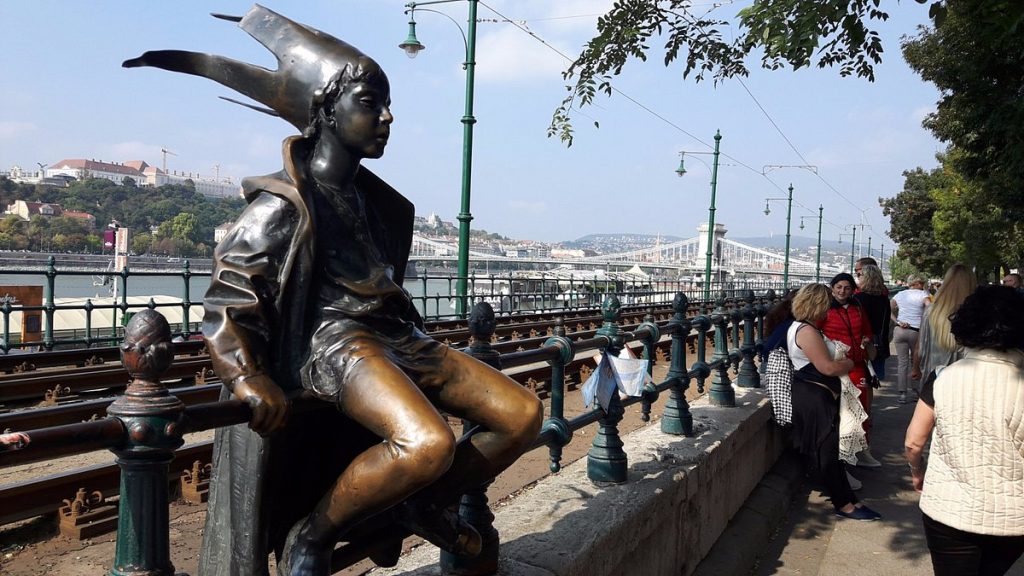
Created by acclaimed Hungarian sculptor László Marton in 1972 and installed in 1990, the statue was inspired by his own daughter, Évike, who loved dressing up as a princess in her childhood. The statue not only promises a return to Budapest but is also believed to bring good luck and self-fulfillment when one rubs the princess’s knee.
Over the years, the statue has become a beloved symbol of innocence and fantasy, and its popularity extends beyond Hungary, with copies appearing in other locations. Statues of children often evoke feelings of pure joy and imagination, making them frequent subjects of rituals designed to bring good fortune. The Statue of the Little Princess continues to captivate both locals and visitors, reminding them of the magic that exists in the simplest of dreams.


Comments are closed.